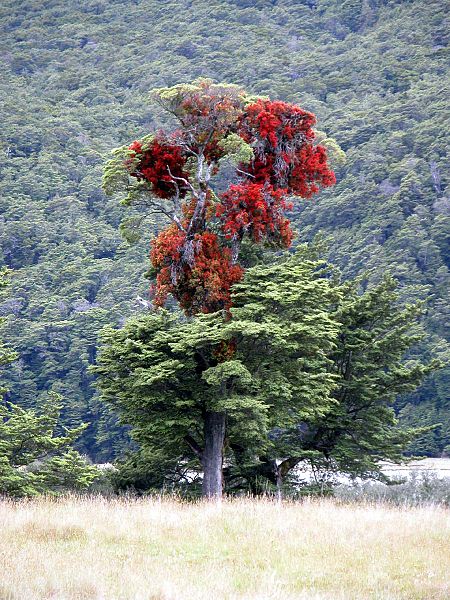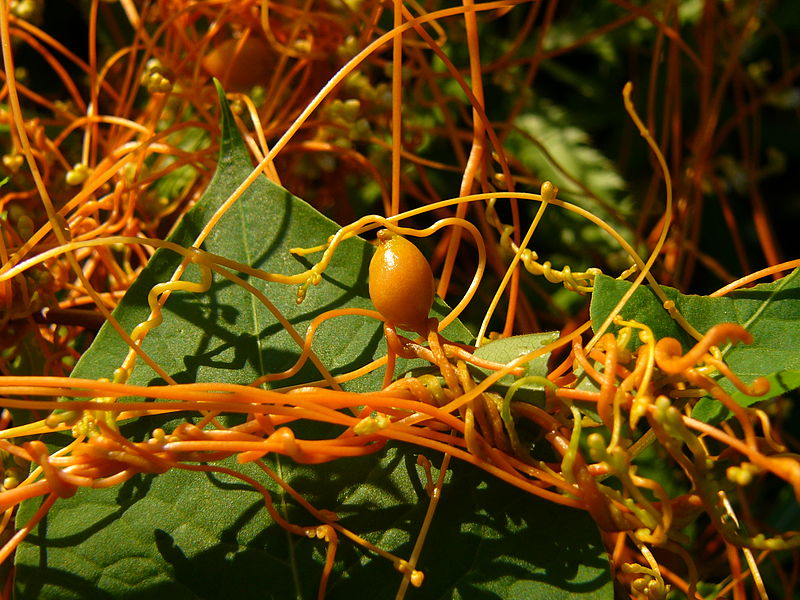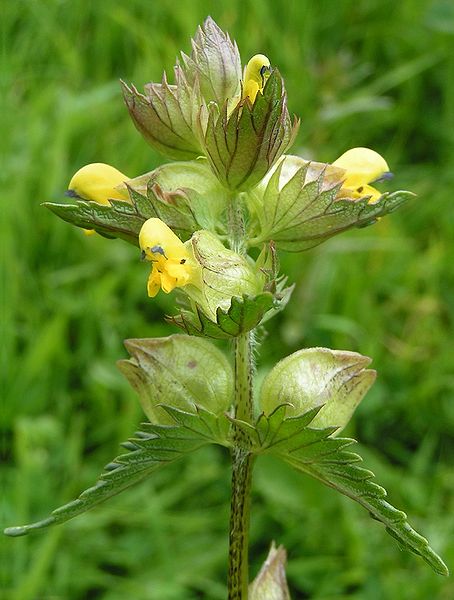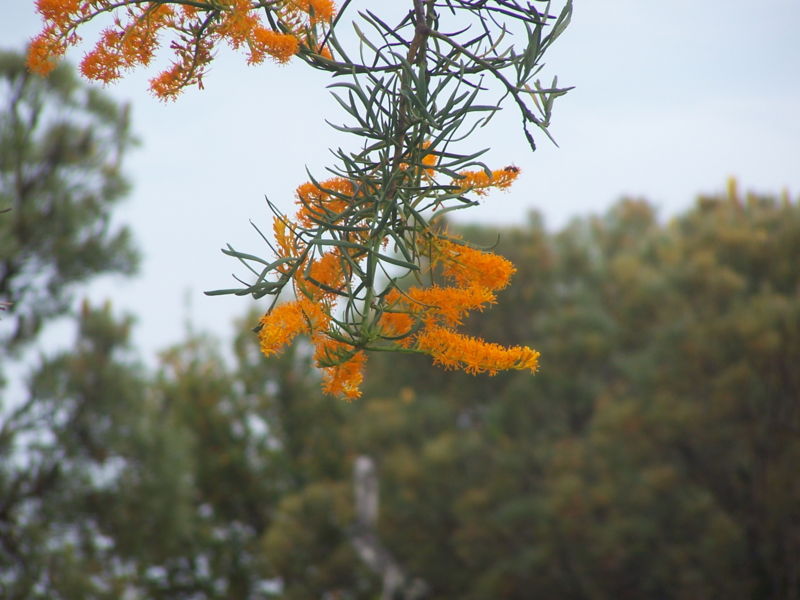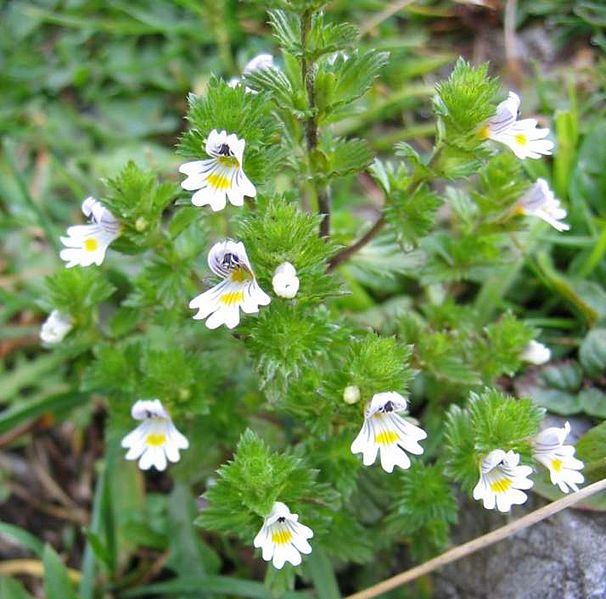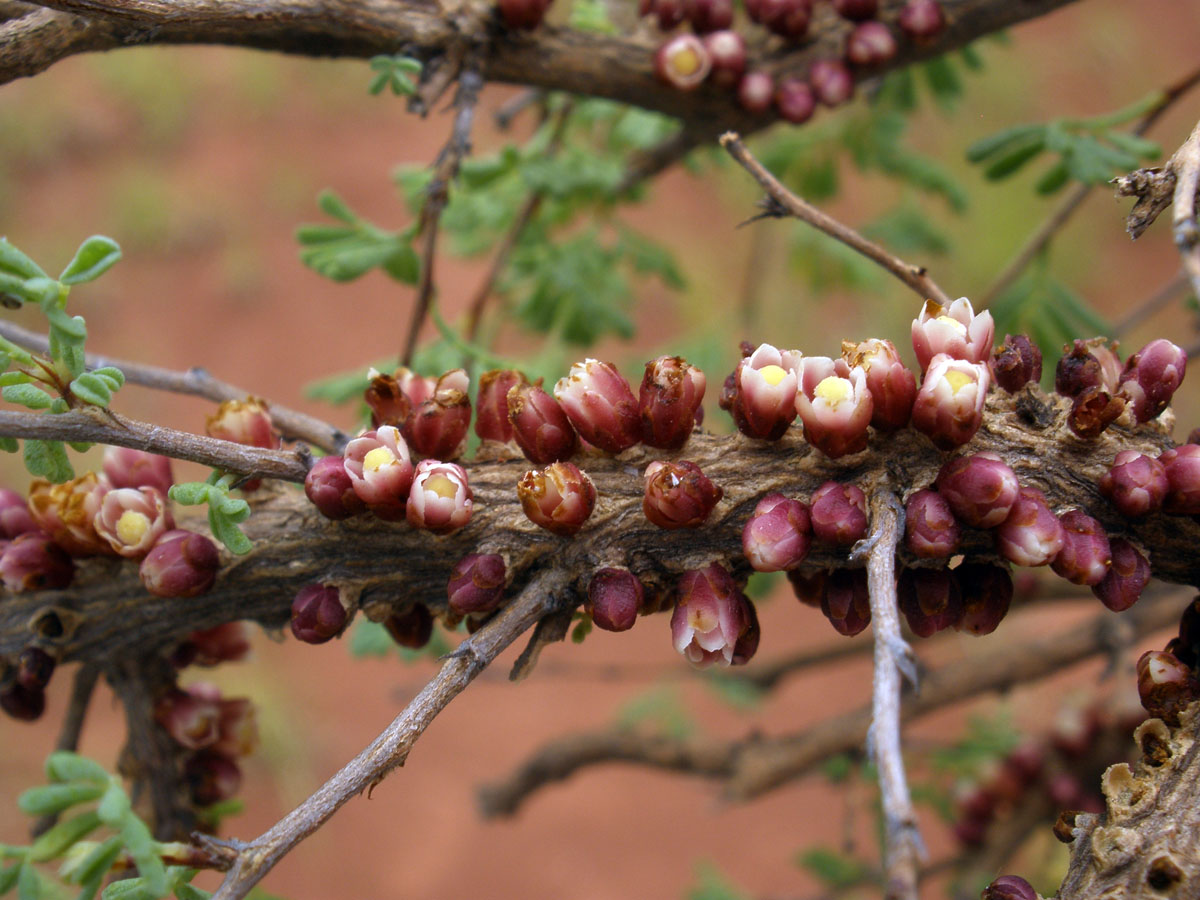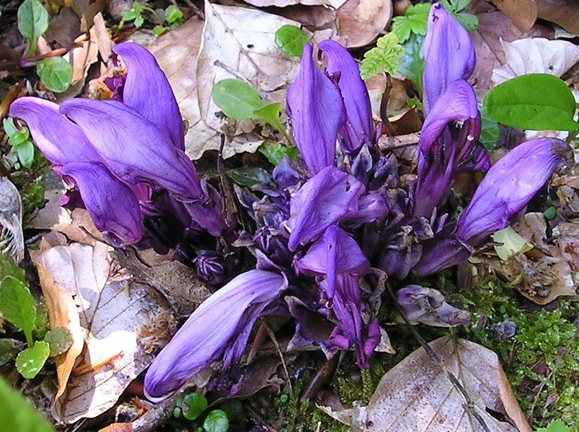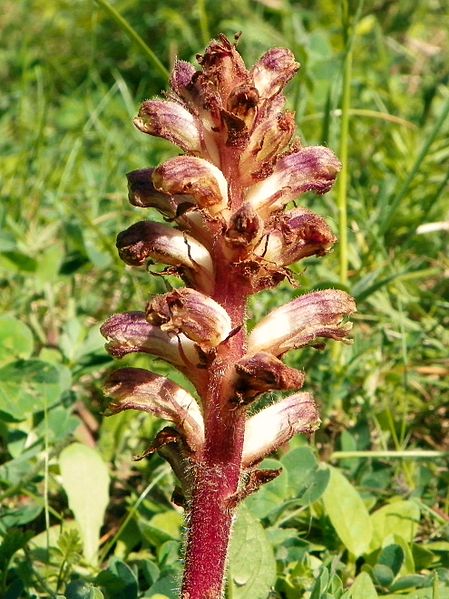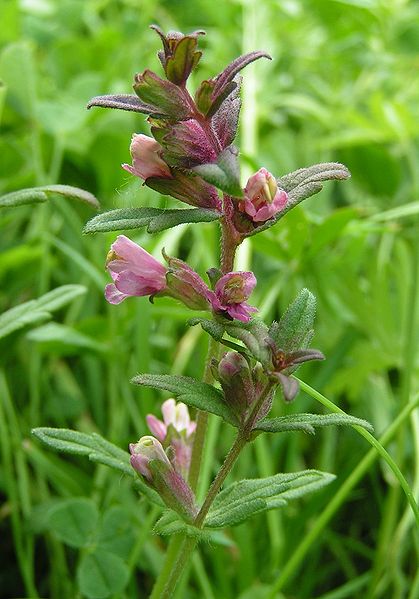A Parasitic Plant is the one which feeds on other living organisms for there growth. They usually grow on trees and not in soil. They feed on tree nutrients and grow and make the host plant a weak one. There are around 4000 species of these type of parasitic plants which survive on a host. Usually, big trees become the target and these parasitic plants mostly reach through airborne seed dispersal techniques.
1. Mistletoe
Mistletoe plants grow on the branches of shrubs and trees. They grow on a wide variety of hosts and stunt there growth, but sometimes the eventually kill the host.
2. Corpse Flower
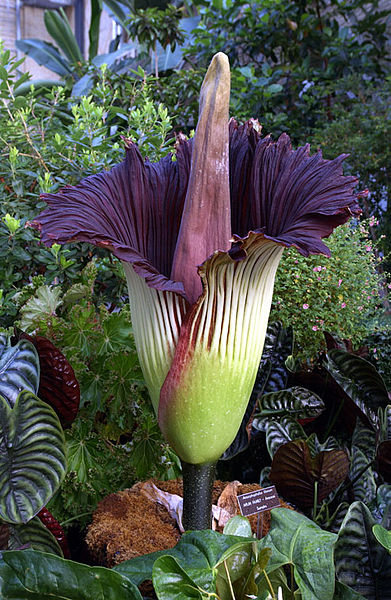 |
This beautiful looking flower has no leaves of any kind to support photosynthesis. So, it steals everything from neighboring plants and trees through roots. It has got its name from the foul smell it emits by churning all the stolen nutrients.
3. Dodder Plant
This plant affects all kind of wild and cultivated plants. Its a biggest threat to potato cultivation. They usually get dispersed a lot as they are found with fresh seeds of different plants.
4. Yellow Rattle
Again this one looks beautiful, but it grows by stealing some nutrients from neighboring plants.
5. Australian Christmas Tree
These plants are somewhat smart. They have roots, few leaves for photosynthesis, but they don’t like to grow in soil. These plants grow their roots on other trees barks and absorb nutrients from them for survival.
6. Eyebright
Eyebright is not a fully parasitic, but it uses roots to steal from neighboring plants. As it grows, it decreases the usage form other plants.
7. Thurbers Stemsucker
This Stem-sucker has no roots, leaves or branches. It completely depends on the host for its whole life. It eventually grows and sends out new seeds to other trees to spread itself.
8. Purple Toothwort
This root parasitic plant has a clever mechanism for dispersing its seeds. It explodes and throws its seeds everywhere. Though it is a parasitic plant, it is getting popular as a garden plant.
9. Broomrape
Broomrape seeds have a root-like growth, which attaches to the roots of nearby hosts. Once attached to a host, the broomrape keeps on stealing water and nutrients from its host.
10. Red Bartsia
This is not completely parasitic, but this plant steals from its neighboring plants in worst case scenarios to survive.
Image inputs from Wikipedia and Phytoimages. Please click on the images for respective copyright attribution.

